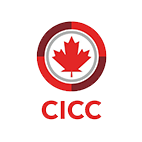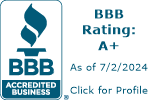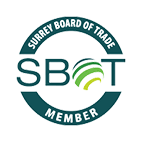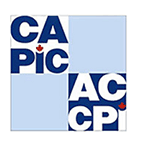I’ve been working on my PR application for two years, but I keep hearing about major changes to the system. Are my chances worse now compared to when I first started studying?”
This is what Jaspreet told me during our consultation last month. She’s finishing her master’s in December 2025 and just realized the immigration process has changed since she began studying.
She’s not alone. In 2025, the infamous study to PR pathway was turned upside down, and most students realize it too late.
The international student cap has decreased the number of new students arriving in Canada by roughly 40%, while Express Entry draws have become more competitive.
Recent CRS cut-offs for Canadian Experience Class draws have reached 534 points. However, in earlier general draws from 2025, scores were usually around 520 points. This shows that competitiveness changes at different times during the year.
If you are studying in Canada or planning to, knowing these changes is very important for your success. The old approach has been rewritten, and what worked for students a few years ago might no longer be effective today.
Canada’s Immigration Rules for International Students Have Changed
The immigration rules for international students have experienced the biggest change in over ten years. These updates impact every step of the process, from applying for a study permit to obtaining permanent residence.
Canada’s International Student Cap for 2025
International student caps have led to unprecedented competition: Provincial and territorial allocations for 2025 have been finalized under the new cap system, resulting in fewer study permits being available overall. This shortage has permeated the system, making each stage more competitive.
Category-Based Express Entry Draws
Canada’s Express Entry system has shifted focus from general draws to category-based selections, now prioritizing candidates in key sectors experiencing labour shortages.
- French-language proficiency
- Healthcare and social services occupations
- Science, Technology, Engineering and Math (STEM) occupations
- Trade occupations
- Agriculture and agri-food occupations
- Education occupations
Post-Graduation Work Permit (PGWP) Eligibility Has Become More Restrictive
New field-of-study requirements limit PGWP eligibility to programs that support Canada’s economic objectives; however, these restrictions do not apply to degree graduates from Canadian universities.
If you’re doing a degree program (like a bachelor’s, master’s, or PhD):
- You don’t need to worry about your area of study.
- You’re still eligible for a PGWP after graduation, regardless of your field of study.
If you’re doing a non-degree program (like a diploma or certificate):
- Your program must align with one of Canada’s priority job sectors, such as healthcare, trades, or education.
- Canada updated the list of eligible fields in June 2025. Some programs were added, while others were removed.
- You need to check if your program’s CIP code is on the approved list when applying for your study permit.
Most international students now need a new study permit before transferring to a different school.
Starting December 23, 2024, you will no longer be able to apply for a study permit at a Canadian port of entry.
Important Note: Only U.S. citizens, U.S. permanent residents (Green Card holders), and residents of Greenland or St. Pierre and Miquelon can apply for a study permit at the Canadian border; everyone else must apply online before travel.
Impact of New Study Permit Changes on Students
These new study permit changes present both challenges and opportunities for international students. The competition has grown ten folds. Students who match their education and career choices with Canada’s job market can succeed with better planning.
A software engineering student recently shared during a consultation: “I chose my program in 2022, thinking any Canadian degree would lead to PR. Now I realize I need to plan every decision around CRS optimization and Express Entry categories. I wish someone had explained this earlier.”

The Best Pathway to Get Canada PR After Study
Based on current policy trends and successful cases I have seen, there is no one-size-fits-all solution. Each case is unique. Different educational paths lead to very different outcomes. Here are some scenarios that highlight why strategic planning matters now more than ever.
Scenario 1: Two-Year Diploma Graduate (Age 21)
If you are a young applicant who moved to Canada after grade 12 and finished a two-year diploma. After graduating and gaining 1 year of skilled work experience, even with strong language skills of CLB 9, your CRS breakdown will be as follows:
| Category | Factor | Points |
| Core/Human Capital Factors | Age | 110 |
| Level of Education | 98 | |
| Official Languages | 124 | |
| Canadian Work Experience | 40 | |
| Subtotal | 372 | |
| Skill Transferability Factors | Language Proficiency + Education | 25 |
| Work Experience + Education | 13 | |
| Subtotal | 38 | |
| Additional Points | Study in Canada | 15 |
| Subtotal | 15 | |
| Total CRS Score | 425 |
This score will not get you an invitation to apply unless you are working in a high-demand occupation under category-based draws.
Even then, recent category-based draws often require scores well above 425.
If your language proficiency is below CLB 9, which is common, the situation becomes even more difficult.
Scenario 2: Bachelor’s Degree Graduate (Age 23)
The same profile but with a Canadian bachelor’s degree instead of a diploma will give you different results:
| Category | Factor | Points |
| Core/Human Capital Factors | Age | 110 |
| Level of Education | 120 | |
| Official Languages | 124 | |
| Canadian Work Experience | 40 | |
| Subtotal | 394 | |
| Skill Transferability Factors | Language Proficiency + Education | 25 |
| Work Experience + Education | 13 | |
| Subtotal | 38 | |
| Additional Points | Study in Canada | 30 |
| Subtotal | 30 | |
| Total CRS Score | 462 |
As you can see, having a bachelor’s degree greatly improves your score and positioning for category-based draws. Though, it is still challenging for general Express Entry selections.
Scenario 3: Strategic Post-Graduate Education (Age 25)
If you’ve earned a bachelor’s degree in your home country and are pursuing a Post-Graduate Diploma or Master’s degree in Canada, you’ll likely receive a higher score.
With a Post-Graduate Diploma, all other factors remaining equal, this candidate achieves approximately 467 CRS points.
However, choosing a Master’s degree instead jumps the score to 489 points, a big difference that massively improves invitation chances, particularly for category-based draws.
| Category | Factor | PG Diploma | Master’s Degree |
| Core/Human Capital Factors | Age | 100 | 100 |
| Level of Education | 115 | 135 | |
| Official Languages | 124 | 124 | |
| Canadian Work Experience | 40 | 40 | |
| Subtotal | 379 | 399 | |
| Skill Transferability Factors | Language Proficiency + Education | 25 | 25 |
| Work Experience + Education | 13 | 13 | |
| Subtotal | 38 | 38 | |
| Additional Points | Study in Canada | 50 | 52 |
| Subtotal | 50 | 52 | |
| Total CRS Score | 467 | 489 |
Scenario 4: Optimal Strategy Implementation (Age 26-27)
The highest-scoring scenario involves a candidate arriving in Canada with international experience. So if you have a foreign bachelor’s degree, a Canadian master’s degree, one year of foreign skilled work experience, and one year of Canadian skilled work experience, you can earn around 512 CRS points.
| Category | Factor | Points |
| Core/Human Capital Factors | Age | 110 |
| Level of Education (Master’s) | 120 | |
| Official Languages | 136 | |
| Canadian Work Experience (1 year) | 40 | |
| Subtotal | 406 | |
| Skill Transferability Factors | Foreign Work Experience + Education | 25 |
| Canadian Work Experience + Education | 13 | |
| Subtotal | 38 | |
| Additional Points | Study in Canada (Master’s) | 30 |
| Subtotal | 30 | |
| Total CRS Score | 512 |

Most Effective Study Permit to PR Strategy in 2025
Here is the more effective study permit to PR pathway backed by real success stories:
Phase 1: Pre-Arrival Strategic Preparation
- Complete a bachelor’s degree in a high-demand field. While any recognized degree meets basic requirements, programs in healthcare, engineering, computer science, or skilled trades provide the best foundation for future PR success.
- Gain relevant work experience abroad. Two years of skilled work experience in your field before studying in Canada greatly enhances your eventual Express Entry profile. This experience contributes to CRS points and shows authentic career progression.
- Achieve strong language scores early. Aim for CLB 9+ in English or French. Language skills are the easiest CRS factor to manage and can significantly boost your score by increasing your language points and skills transferability points. Don’t wait until after graduation; start preparing before you even apply to study.
Phase 2: Strategic Canadian Education (Study Period)
- Choose a master’s program at a recognized institution. Master’s degrees provide more CRS points than diploma or certificate programs, and the additional 30 points for Canadian master’s education can be decisive in competitive draws.
- Choose programs that match Express Entry categories. Healthcare, STEM, skilled trades, and education programs fit current category-based draws. Find out which occupations frequently appear in Express Entry invitations.
- Focus on institutions with strong employer links. University reputation is less important for immigration compared to career growth. Choose programs that offer co-op placements, industry partnerships, and robust alumni networks in your desired field.
Phase 3: Post-Graduation Work Permit Optimization
- Secure employment in skilled occupations quickly after graduation. Continuous employment strengthens your overall application and may improve your chances with provincial nomination.
- Target employment in Express Entry Targeted Categories. Healthcare, skilled trades, STEM, and education sectors appear most frequently in category-based draws. These sectors also offer better Provincial Nominee Program (PNP) opportunities.
- Apply for PR before turning 30 if possible. Age-related CRS points decrease after 30. Schedule your timeline to submit Express Entry applications while maximizing your age-related points.
Case Study: 12-Month Study-to-PR Strategy
In the beginning of the article we have mentioned Jaspreet, who will complete her master’s program in Vancouver in December 2025. Let’s assess her current situation and develop a realistic plan for the future.
Her Current Profile
- Age: 28 years (losing age points after 29)
- Education: Bachelor’s from India + Master’s in Nursing from UBC
- Background: 2 years of registered nursing experience in Mumbai
- Language: CLB 9 English proficiency
- Canadian experience: Limited (graduating in December)
Immediate Steps After Completing Masters
- Apply for a 3-year PGWP immediately after graduation
- Begin aggressive job search in registered nursing roles in Vancouver/BC
Gaining Experience
- Secure registered nurse position (NOC 31301)
- Begin accumulating Canadian skilled work experience
- Consider part-time French language training to boost CRS score
- Monitor Express Entry draws specifically for healthcare category invitations
PR Application Readiness
- Reach the 12-month Canadian work experience milestone
- Achieve a competitive CRS score based on age, education, language, and work history
- Apply through targeted Express Entry draws, particularly in priority sectors like healthcare
Get Professional Help with Your Canadian PR Application
Apply for Canadian PR with the Help of Licensed RCIC Experts.
Major Challenges You Might Face in 2025
The 2025 changes have created several challenges for international students in Canada:
- Increased Competition: Study permit approvals have tightened, requiring Provincial Attestation Letters for all applicants. PGWP eligibility is now restricted to priority programs, excluding many arts and humanities fields. Express Entry CRS scores are higher than ever.
- PNP Limitations: Reduced provincial quotas mean longer processing times and higher competition. Most streams still require 12-18 months of Canadian work experience, but point-based systems created additional provincial-level competition.
- Policy Uncertainty: Immigration policies are changing pretty frequently, and labour market demands are evolving as well. Students must build flexibility into their plans and consider multiple pathways to manage these risks effectively.
Advantages for US Applicants
- Americans typically face lower rejection rates and faster processing times. U.S. citizens, permanent residents, and residents of Greenland or St. Pierre and Miquelon can apply for a study permit at the Canadian border.
- Strong English language skills provide immediate CRS advantages. Most Americans can achieve CLB 9+ scores without intensive preparation, adding crucial points to Express Entry profiles.
- Professional credentials often transfer more easily between the US and Canada, particularly in regulated professions like engineering, healthcare, and finance.
- Cultural familiarity can ease the transition and help with networking, job searching, and workplace integration.
Take Professional Help From Licensed Consultants
The 2025 changes have created both winners and losers. Students who adapt their strategies to current realities can still achieve Canadian PR successfully, but assumptions based on previous cohorts’ experiences no longer apply.
At ELAAR Immigration, our licensed professionals stay current with policy changes and can assess your specific situation under the updated rules.
Contact our team today for a comprehensive evaluation of your study-to-PR strategy and ensure your educational choices align with current immigration realities.

Apply for Canada PR with Licensed Consultants
Speak with an expertFrequently Asked Questions: PR After Study in Canada
Is a diploma enough to qualify for PR after study?
Generally no. New PGWP restrictions and Express Entry scoring systems favor bachelor’s or master’s degrees. While some diploma programs may provide pathways through specific Provincial Nominee streams, master’s degrees offer significantly better prospects in the current system.
What fields of study improve PR chances the most in 2025?
Healthcare, skilled trades, STEM fields, and transportation appear most frequently in Express Entry category-based draws. These sectors also have better job markets and Provincial Nominee Program opportunities. Avoid oversaturated fields like general business or arts unless you have specific expertise that aligns with Canadian priorities.
How does work experience outside Canada affect my PR application?
Foreign work experience provides valuable CRS points and demonstrates career progression. However, it must be in skilled occupations and properly documented. The most effective strategy combines foreign experience with Canadian education and work experience for maximum CRS optimization
Can I apply for PR if I’m over 30?
Yes, but age-related CRS points decline after 30, making applications more challenging. Focus on maximizing other factors like work experience, education credentials, and language scores. Provincial Nominee Programs often provide better options for older applicants than Express Entry general draws.
What are the chances of getting a PNP nomination after PGWP?
Most provinces still require 12–18 months of Canadian work experience for nomination, and those rules haven’t changed. What has changed is how long it takes as the processing times have gone up considerably. Express Entry based streams now take 6–9 months, and base PNPs can take over a year. So while eligibility is stable, timelines are longer.
How long does the PR journey usually take after study and work?
Expect 2-4 years from graduation to PR approval in the current system. This includes time for PGWP processing, gaining required work experience, submitting applications, and processing PR applications. Earlier cohorts often achieved faster timelines, but increased competition has extended average processing periods.










